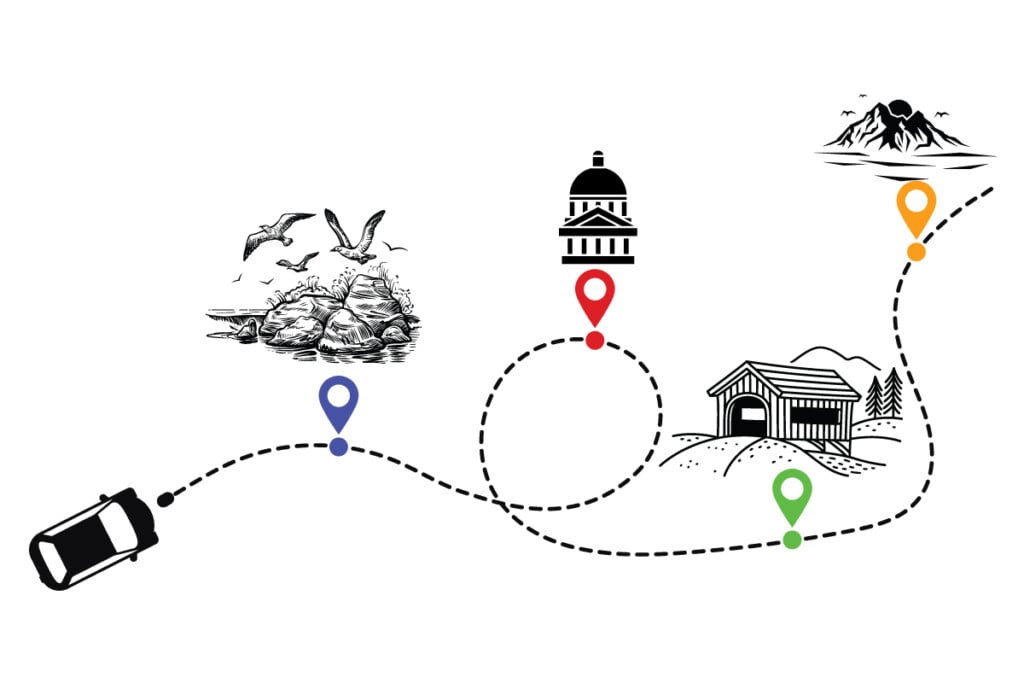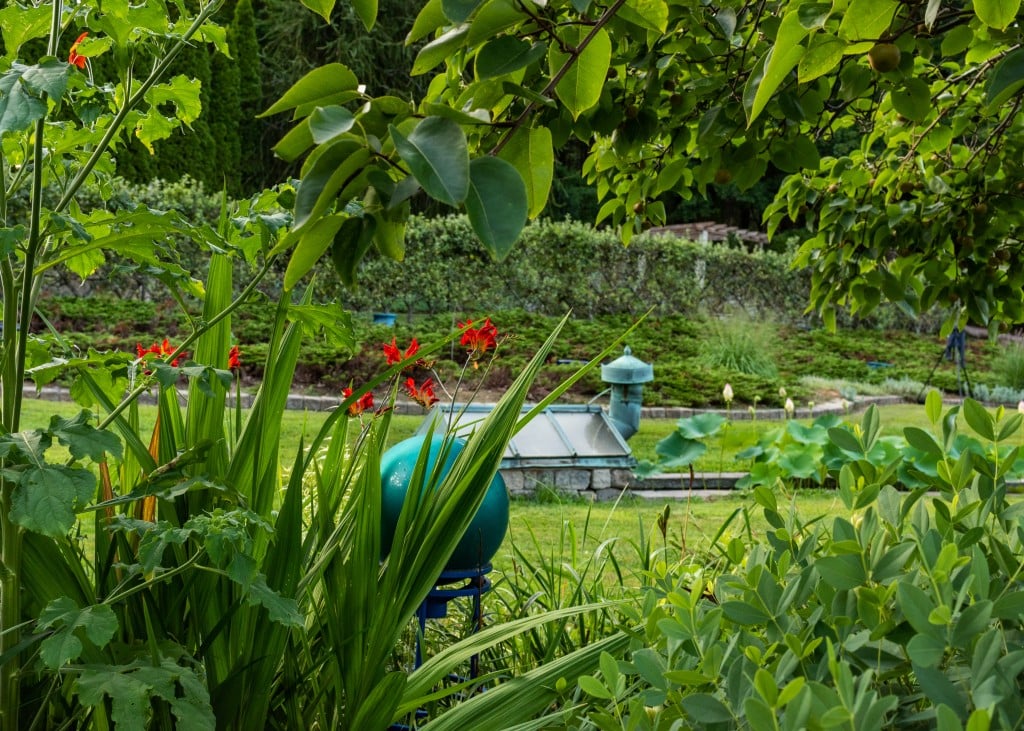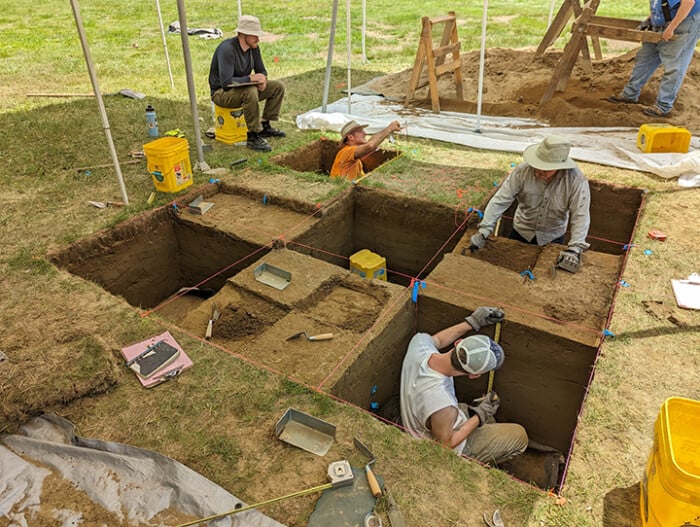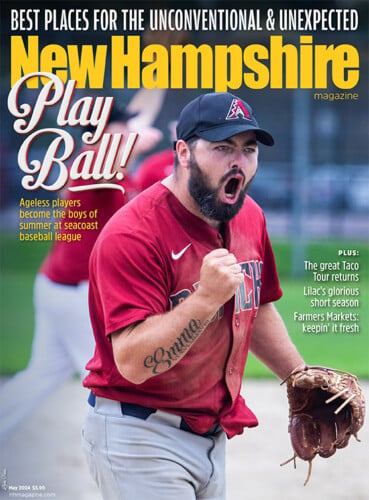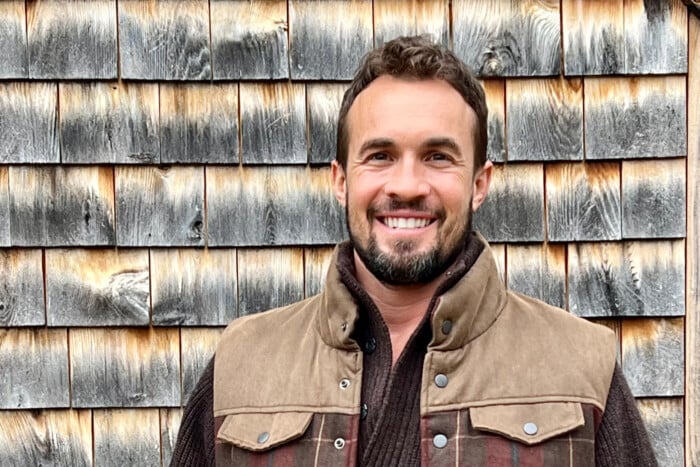The triumph of Challenger

Photo of Christa McAuliffe from the tribute wall at the McAuliffe-Shepard Discovery Center.
Yes, it’s been 25 years.
On January 28, 1986, NASA attempted to put the first teacher in space. The mission was not completed that fateful day, but Christa McAuliffe’s famous line – “I touch the future. I teach” – has proven prophetic. She continues to inspire and instruct a new generation of students and teachers alike.
Christa McAuliffe lost her life while reaching for the stars 25 years ago this month. Concord, New Hampshire, where she lived and taught, preserves her legacy with two monuments as different as Earth and space and yet, somehow, complementary: the gleaming high-tech pyramid over the McAuliffe-Shepard Discovery Center and the polished black polygon of stone that marks her grave in Blossom Hill Cemetery. Each one is a dark mirror – the gravestone reflecting the faces of those who come to remember, the pyramid reflecting the sky.
On New Years Eve 1985, Malcolm Cameron was introduced to Christa McAuliffe at Concord’s First Night celebration, where she had been asked to judge an ice sculpture contest on the Statehouse lawn. First Night was also the city’s opportunity to send Christa off; it would be her last public appearance in the town she called home before leaving for Cape Canaveral for her final flight preparations.
“She took my hand and it was like electricity flowed out of her,” Cameron recalls nearly 25 years afterward. “Christa was one of those rare people you can’t describe … the energy just bubbled out of her.”
Cameron, a radio broadcaster and former English teacher, conversed briefly with Christa, telling her about his own short-lived stint as an educator and how he hadn’t particularly enjoyed the profession. She thanked him, he says, for trying the job out at all, which she said was “more than most people do.”
Cameron says he will never forget the parting words with which Christa McAuliffe left him: “Maybe you’ll return to teaching someday.”

Painting by Marlene Putman Evans that hangs at Concord High School.
For the past 19 years Mal has worked as an educator at the McAuliffe-Shepard Discovery Center in Concord, a position he says is the perfect fit for his interests in science and making meaningful connections with the public. It has indeed been his return to teaching, and he appreciates the irony. “When I first walked in to the job I stopped under Christa’s portrait,” he says. “I said to her, ‘See what you did to me?'”
Cameron’s experience is a rare glimmer of the positive in the arc of the story of the Challenger tragedy. Mostly, the story is one of a traumatized community and state that – even after 25 years – seems to have difficulty dealing with the reality of what happened.
WMUR-TV has footage of the explosion and the aftermath, but they don’t air it. In programs about the Challenger, they fade to black just ahead of the mid-air breakup. News Director Alicia McDevitt says the station wants to be attentive to the sensibilities of people who knew and cared about Christa. New Hampshire Public Television approaches it in the same way.
People close to Christa’s family shy away from interviews about the tragedy. One acquaintance said, “Oh, that will be a tough one to get people to talk about.” And so it was.
Even the McAuliffe-Shepard Discovery Center only touches lightly on the tragedy. The center has avoided staging events on the January anniversary – they’ve chosen instead to serve cake and celebrate Christa’s life on her birthday, Sept. 2. This year, though, on the 25 anniversary, they are making an exception, marking it with events still being planned as of early December (when this story was going to press).
There is another center that honors Christa, this one in her hometown of Framingham, Mass., and it takes a more direct approach to the tragedy, celebrating Christa’s memory at every opportunity.
“Concord, New Hampshire … seems to shy away from Christa,” Mary Liscombe, the associate director of Framingham’s Christa McAuliffe Center, told New Hampshire Public Radio in a recent interview. Liscombe, who was a college friend of Christa’s at Framingham State University, says that while the perspectives of the two communities do stand in contrast, she respects both of them.
Why there is an attitude of avoidance in New Hampshire, when so many other tragedies have been laid bare for New Hampshire’s consumption, depends on whom you ask. For some, it’s a matter of Yankee discretion, of keeping private their own memories of Christa as a friend, or their roles in protecting her husband and children from the scrutiny of the outside world. For others, the memory of watching the disaster, either on TV or from the ground at Cape Canaveral, is simply too sad to re-live.
But there also seems to be a feeling of responsibility, even some guilt. Because the last NASA mission to end in tragedy had occurred in 1967, no one anticipated or planned for any danger in Christa’s flight. For New Hampshire students from kindergarten through high school, time stood still as they were set up to watch an event for the ages unfold on the televisions rolled into their classrooms on metal A/V carts. It was supposed to be a “where-were-you-when” occasion of the best possible kind. But instead those thousands of children saw seven human lives extinguished, including that of their much-adulated local hero. And the adults simply didn’t know what to say in the seemingly endless silence that followed the horrifying boom.
Phil Browne was one of those adults and, like Christa, a teacher in New Hampshire. He’d also been one of six finalists to interview for President Reagan’s Teacher in Space project when NASA officials came to the state, and his memory of Christa McAuliffe matches nearly perfectly with Mal Cameron’s.
“We were in the waiting room together and I’d only been talking with her for a minute or two before I knew she’d be the one,” he remembers. “It kind of deflated me, but after she was picked, and continued to personify the woman I’d met who radiated so much intelligence and spark, I was so proud of her.”
At the time Browne was teaching biology at Goffstown High School, and like practically every other teacher in the state, he’d brought a TV into his classroom to watch the launch with his students.
“It was pretty clear that something had gone really wrong, ” he says. “When the announcer confirmed it, I just turned the TV off.” Later, when Browne began teaching at Concord High School, he noted that the principal, Charles Foley, had created a tremendous protective barrier between the media and the students there. (This “circling of the wagons,” as Browne called it, was something Foley had unfortunate practice with. Just a few weeks before Challenger, a gunman had taken two students hostage in Concord High School, and police had shot and killed the perpetrator, a Concord dropout, in the school’s hallway.)
Unlike many of his colleagues, Phil Browne wasn’t content to let Christa’s mission die with the Challenger crew. He had long been an avid proponent of the space program and remembered what many others had forgotten, that Christa McAuliffe had gone to space with a plan, a specific curriculum she could teach from the Challenger, one that would inspire kids to pursue science and math in their own schools.
 Phil Browne (left) and Mal Cameron pose with a cut-out of Barry Rock, the UNH Professor who worked with Browne to devise a way for ground-based students to assist with NASA space research. |
“All I could think about was continuing Christa’s mission,” Browne says. First he developed a slide show about the space program in conjunction with a photography teacher and showed it each year at Concord High until his retirement. But something else happened to Browne along the way. In the summer of 1986, just a few months after Challenger, he was selected to participate in a professional development program run by NASA at the Goddard Space Flight Center, and there he felt the same calling Christa had to make space science a reality for kids on Earth.
At Goddard, NASA was working on the International Geosphere/Biosphere Program, or IGBP, which would deploy satellites to measure environmental data on earth, such as shrinking ice caps and deforestation. As satellites were not considered particularly trustworthy, one way NASA told the teachers that the data would be verified was by “ground truthing,” or physically traveling to the observed sites to confirm the satellite data.
This was the basis for Browne’s inspiration.
“It was perfect. This was a way to involve students in a space program that didn’t risk anyone’s life, but also could make some really complex science much less mysterious to them.”
Browne embarked on a two-year letter-writing campaign to scientists, congressmen and even Secretary of Education William Bennett about his idea to have students participate in ground-truthing for NASA. Finally, Barry Rock, a scientist who’d recently arrived at the brand-new Institute for the Study of Earth, Oceans and Space at UNH, answered Browne’s call. The pair worked out a program where Browne’s students could hike up Mount Kearsarge to collect samples, do some analysis in the field and then give the data to Rock at UNH, where he was conducting acid rain research.
Within a couple of years Browne realized that this program was so valuable as a teaching tool that it should be accessible to every student in the state, even in districts that couldn’t afford to send students on field trips to collect and analyze samples. Rock agreed, and found a bio-indicator that would be accessible to every school in New Hampshire.
“It was white pine,” Browne says, “and that grows everywhere. The stressor we were looking at was tropospheric or ‘low’ ozone, which comes from smog. 1991 was the first year of this statewide program, called Forest Watch. And it’s still working today.”
In fact, more than 100 schools submit data to UNH each year, and that data has yielded serious results, such as the tracking of white pine’s adaptation to ozone pollution and the effect of catalytic converters on the environment. Through Forest Watch, New Hampshire public school students have been able to corroborate satellite data; in effect, they are doing the work of NASA astronauts in their own back yards.
“It’s kind of like a phoenix rising, the way this program has developed,” Browne says. “I never would have even thought of this had Christa not died, and definitely had I not met her and experienced firsthand her belief in the mission.”
Phil Browne isn’t alone in pointing out that Challenger’s loss has contributed significantly to science. Mal Cameron also believes it’s so, although in his position as an educator at the building that bears Christa McAuliffe’s name, it’s often the skyward mission that defines the context of Challenger’s continuing legacy.
“NASA was brash before Challenger,” he says, “and afterward, everything changed. It had to. And it made for a safer program.”
Cameron points out that, at the time of our interview, the space shuttle Discovery had been sitting on the launch pad at Kennedy Space Center for three weeks. After an aborted launch, a series of small problems led to repairs that would delay the final flight of the only shuttle remaining in service for at least another two weeks.
“Before Challenger, this was the kind of thing NASA would have not paid much attention to. And although for some it might not be enough to justify her loss, we have Christa McAuliffe and the Challenger crew to thank for the lives of all the astronauts who’ve made safe shuttle flights since then.”
Selected over so many others for a program that would lead to her untimely death, Christa McAuliffe was above all a mother, wife, teacher and scientist. And according to those who knew her, Christa would want the lessons of Challenger discussed frankly and openly as an important moment in science. She would likely agree with both of those who’ve found something positive to appreciate in Challenger’s wake, though she probably wouldn’t want to take credit for the good things that came after it. But she should at least be thanked for them – because if Challenger truly is New Hampshire’s greatest sorrow, then Christa McAuliffe is its greatest hero.
The unthinkable fate of the Challenger crew…
 The last words captured by the flight voice recorder in Challenger were not Commander Francis Scobee’s haunting, “Go at throttle up.” Three seconds later, Pilot Michael Smith uttered, “Uh oh,” at the very moment that all electronic data from the spacecraft was lost.
The last words captured by the flight voice recorder in Challenger were not Commander Francis Scobee’s haunting, “Go at throttle up.” Three seconds later, Pilot Michael Smith uttered, “Uh oh,” at the very moment that all electronic data from the spacecraft was lost.
On July 28, 1986, Dr. Joseph P. Kerwin, director of Life Sciences at the Johnson Space Center, submitted his report on the cause of death of the Challenger astronauts. The crew module was found that March in 100 feet of water, about 18 miles from the launch site in a location coded “contact 67.” While references to the crew were stricken from the report, details about the condition of the module provide many clues about the fate of the astronauts. Kerwin wrote that the cause of the crew’s death was inconclusive, but that the force of the initial explosion was too weak to have caused death or even serious injury.
If the astronauts were not killed by the blast, then how long did they survive? Challenger as a whole was destroyed at 48,000 feet, but the crew module continued its flight upward for 25 more seconds (to 65,000 feet) before pitching straight down and falling into the Atlantic Ocean.
Evidence that at least some of the crew survived included the recovered personal egress air packs (PEAPs) designed to provide oxygen to the crew in case they had to ditch the craft in a ground emergency. Each pack contained several minutes of breathing air, but the tanks had to be opened manually. Salvagers recovered four PEAPs; three of them had been opened.
So it is likely that some — if not all — of the crew were awake and coherent after the disintegration of Challenger, and were conscious long enough to feel the module pitch its nose straight down, to see the blue sky in the cockpit window rotate away in favor of the continent below and to experience a weightless free fall toward the ocean that lasted a full two minutes and 55 seconds. It is a horrifying scenario so extreme that it’s unlikely that even 25 more years will be enough to contemplate it objectively.
Timeline of the story
 1948: Sharon Christa Corrigan is born in Boston, Mass.
1948: Sharon Christa Corrigan is born in Boston, Mass.
1970: Graduates from Framingham State College in Massachusetts; begins teaching career at Benjamin Foulois Junior High School in Morningside, Md.
1978: Earns master’s degree in education at Bowie State College in Maryland; moves to New Hampshire, teaching American history at Rundlett Junior High School in Concord
1980: Begins teaching 9th grade social studies at Bow Memorial Middle School
1982: Begins teaching at Concord High School, where she develops a course entitled “The American Woman” in addition to teaching economics, law and American history
1985: Chosen as winner of the Teacher in Space program, out of more than 11,000 applicants; begins training at NASA facilities in Houston
1986: Space Shuttle Challenger disaster on January 28th claims the life of all nine crew members, including McAuliffe; Framingham State College establishes Christa McAuliffe Center for Education and Teaching Excellence “to continue the educational mission which was the life work of FSC’s most notable graduate”
1988: The New Hampshire legislature approves a plan to build a planetarium as the state’s official memorial
1990: Christa McAuliffe Planetarium opens in Concord
1993: McAuliffe’s mother, Grace Corrigan, publishes “A Journal For Christa,” a biography
2004: Awarded Congressional Space Medal of Honor by President George W. Bush. Christa’s husband Steven James McAuliffe appointed Chief Justice of the New Hampshire District of the Federal Court
2006: Filmmakers Renee Sotile and Mary Jo Godges produce “Christa McAuliffe: Reach For The Stars,” a documentary narrated by Susan Sarandon
2007: Barbara Morgan, McAulffe’s backup in the Teacher in Space program, goes into space aboard Space Shuttle Endeavour
2009: Expansion project at Christa McAuliffe Planetarium completed. Facility transformed and renamed the McAuliffe-Shepard Discovery Center
2011: Mandatory retirement of NASA’s Space Shuttle program, per the directives of President George W. Bush issued in the Vision for Space Exploration Program

